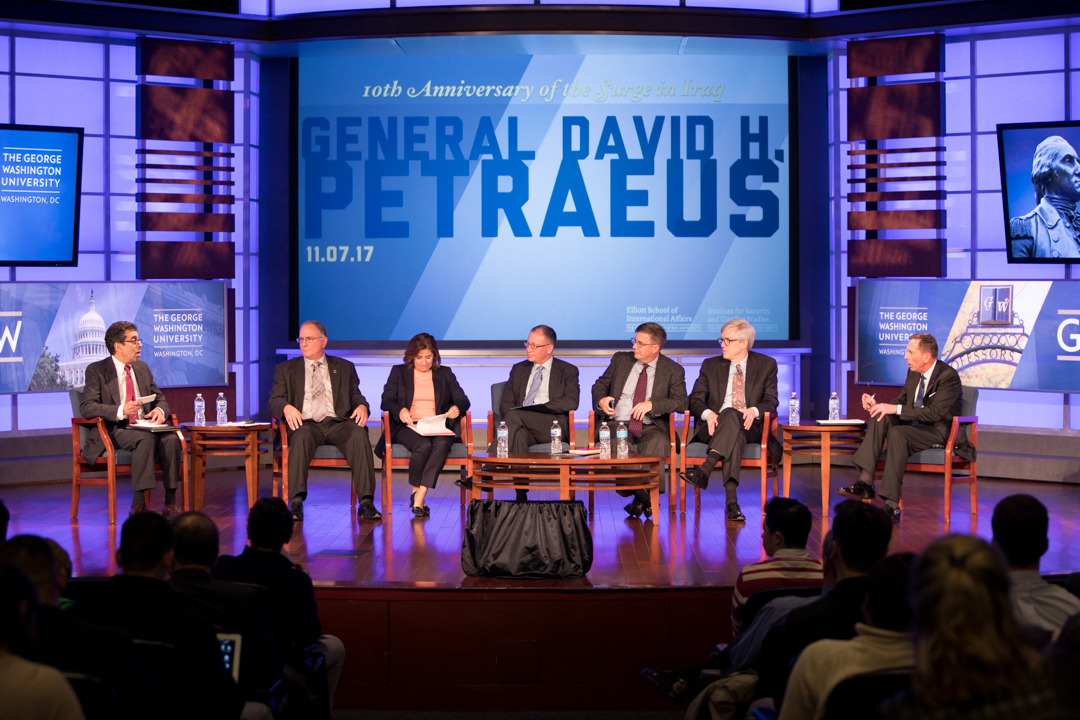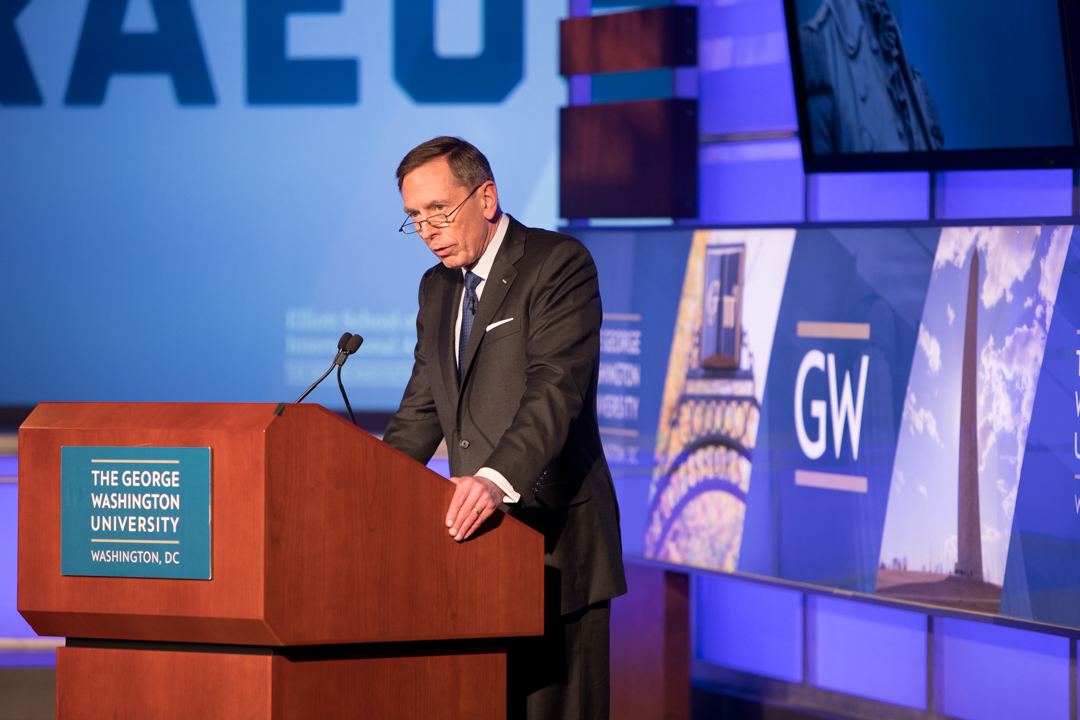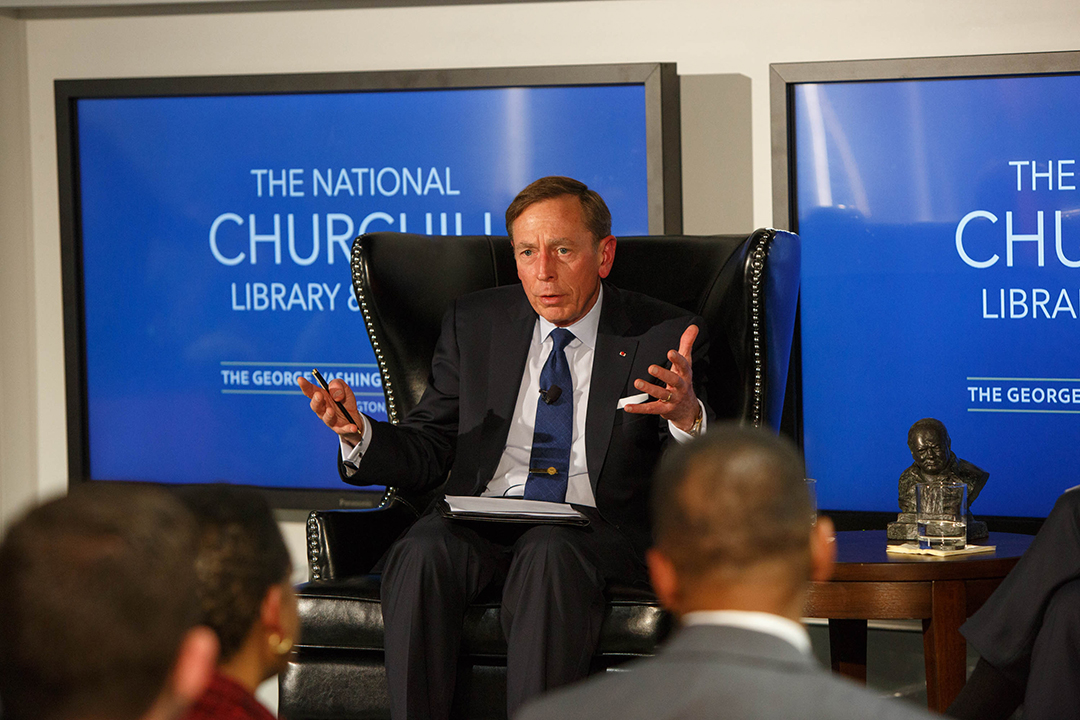By Kristen Mitchell
The 2007 surge has often been misunderstood as only an increase in forces during the Iraq War, but the most significant part of the military operation was the “surge of ideas” that fueled changes to every element of the U.S. strategic and operational approaches, said David Petraeus, retired Army general.
During the surge, American leaders shifted from trying to hand off security tasks to Iraqi forces to focusing on security of the Iraqi people, he said.
“The biggest of the big ideas that guided strategy during the surge was explicit recognition that the most important terrain in the campaign in Iraq was the human terrain, the people,” said Mr. Petraeus, who commanded the Multinational Force Iraq during the George W. Bush administration. “Our most important mission was to improve their security.”
Mr. Petraeus spoke about his role in the Iraq war and its complexities during a Tuesday panel at the George Washington University reflecting on the 10-year anniversary of the surge in Iraq. The event was sponsored by the Elliott School of International Affairs and the Institute for Security and Conflict Studies. Mr. Petraeus’ remarks were followed by a panel discussion and a Q & A period.
As part of a military effort known as the surge, Mr. Bush ramped up military deployment in 2007 during the Iraq War to provide security to Baghdad and Al Anbar Province. He sent roughly 30,000 additional American troops overseas and extended deployments from 12 months to 15 months.
The goal was to establish a unified and democratic Iraq that could self-govern, provide its own defense and be an ally in the war on terror. As part of this strategy, American troops worked to build up Iraqi security forces and protect local populations. Mr. Petraeus recognized early on he had become the face of the surge during the war, a role he had to fill whether he liked it or not, he said.

Panelists reflect on the 2007 Iraq War surge during an event at Jack Morton Auditorium. (William Atkins/ GW Today)
GW President Thomas LeBlanc welcomed Mr. Petraeus to the university, and said the discussion contributes “to the thriving intellectual community we strive to achieve here at GW.” Elliott School Dean Reuben Brigety II said Mr. Petraeus’ assessment of the surge is one of the most comprehensive to date, and that is “a real treat” to hear from him.
During the surge the United States and Iraqi counterparts achieved “slow but steady progress” in building up the capabilities of the Iraqi security forces, Mr. Petraeus said.
“With effective partnering of Iraqi and U.S. forces, the Iraqis steadily shouldered more of the burden and took over more tasks,” he said. “They also increasingly bore the brunt of combat operations with their losses totaling several times those of coalition forces.”
Mr. Bush’s decision to invest more in Iraq was controversial at the time and unpopular with many Democrats. Then- Illinois Sen. Barack Obama was critical of the Iraq War, and as president he moved to withdraw all American forces from the country in 2011. Mr. Petraeus said Mr. Obama’s decision was the wrong call.
Having troops in the region would have allowed the United States to “more rapidly advise, assist and enable Iraqi security forces when ISIS attacked back into Iraq from Syria several years later,” he said.
Peter Feaver, a political science professor at Duke University, said when Mr. Obama was faced with the decision to redeploy troops in Iraq to counter the growing threat or let the country dissolve into chaos, he chose to carry out a “mini version of a surge.”
“That is probably the biggest vindication of President Bush’s decision in 2007,” he said.
Marc Lynch, GW professor of political science and international affairs, said Mr. Obama’s decision had strong political support on both sides and was done with a small number of troops.
“What we’re seeing now in many ways is a healthier type of conditional assistance which might work in the future,” he said.
Linda Robinson, senior international and defense researcher with the RAND Corporation, said Mr. Petraeus’ method of putting troops into neighborhoods to engage locals and develop defense forces is a successful model.
“Local defense forces for many of these countries are absolutely the way we want to secure the population because they’re accepted by the population, they know the area, and it provides a long term exit strategy,” she said. “If we’re going to get involved in a place without an exit strategy, we definitely should have our heads examined.”
Stephen Biddle, GW political science professor, and Peter Mansoor, retired Army colonel and General Raymond E. Mason Jr. Chair in Military History at The Ohio State University, also participated in the panel discussion. Charles Glaser, GW professor and director of the Institute for Security and Conflict Studies, moderated the Q & A session.



